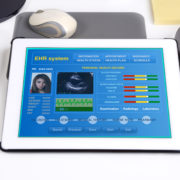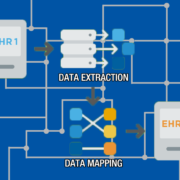Tips for Switching EHR Systems
Shifting to a new electronic health record system can be a bit challenging, especially when you’ve never made a switch before. One of the biggest challenges often accompanied by this type of switch is the migration of legacy EHR data from the old system to the new one. With a thorough understanding of the migration process, however, it becomes much simpler to implement a successful transition.
Reasons for Switching EHR Systems
There are a variety of reasons as to why a healthcare facility may be in need of switching EHR systems. For starters, the old system may not have certain features that the medical center wants to take advantage of. Perhaps the system has reached its end-of-life. Another common reason for needing to switch systems is that the current one is not in compliance with the latest meaningful use requirements and regulations. No matter the reason for switching, though, it is crucial that a new system is chosen based on both its ability to meet projected operational processes and its capability to maintain minimal downtime during the transition. For now, let’s take a quick look at four must-know tips for switching EHR systems.
Tip #1: Choose an Experienced Vendor Partner
Once a new EHR system has been chosen, you must find a vendor that understands the extensiveness of switching these types of systems. From migrating data, removing the old system, and implementing the new one as well as training staff members on the functionalities of the new system, this vendor partner should be highly-experienced in EHR transitions.
Tip #2: Understand the Fine Print
Even you choose a top-of-the-line new EHR system, you still need to read through the fine print of your old one. You may find that you have to follow certain steps in order to avoid having to pay unnecessary fees and penalties; this especially applies if you are under a contract with your old your EHR system. In some instances, you will be able to leave your contract early, but, you will need to speak with the software company first. It is also of the utmost importance to understand what happens to your data once the switch takes place. You may have to jump through certain hoops to retain your data and to switch it to the new system.
Tip #3: Create an Implementation Team
Whether this implementation team is internal or external, you will need one to help through the entirety of the EHR system transition. The goal is to make sure that the new system is able to integrate seamlessly with your current billing and scheduling, all the while providing workloads for your staff members that are not burdening. Your implementation team will lift some of the weight off staff members, ensuring their blended skill set represents all disciplines and workflows. As an additional result, this leads to the EHR transition being led by a team of specialists who will be instrumental in making sure proper guidance is given in regard to both software and hardware integration.
Tip #4: Work with One System at a Time
Staggering the transition is of the utmost value as it allows you to change practice management systems before switching EHR systems. In doing this, staff members are better able to assimilate systems in a way that they are not overwhelmed with learning new workflows.










